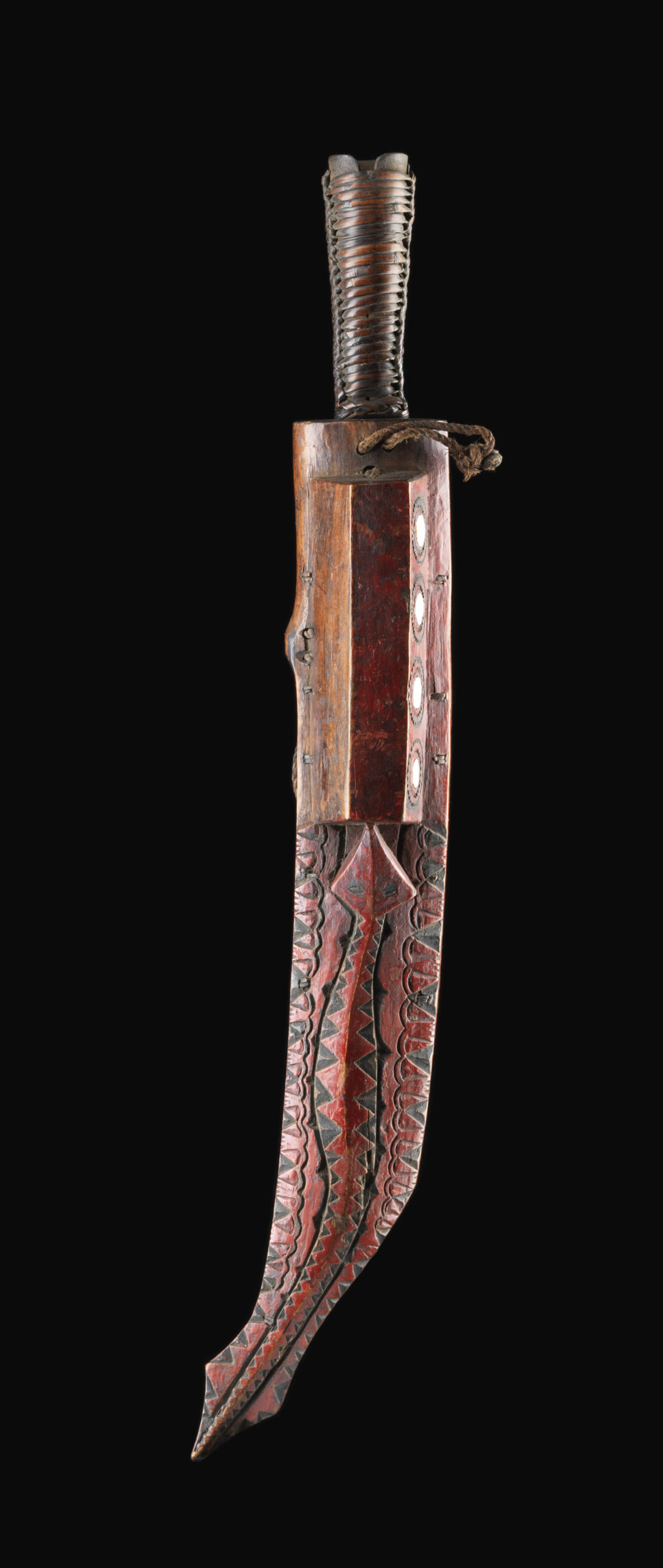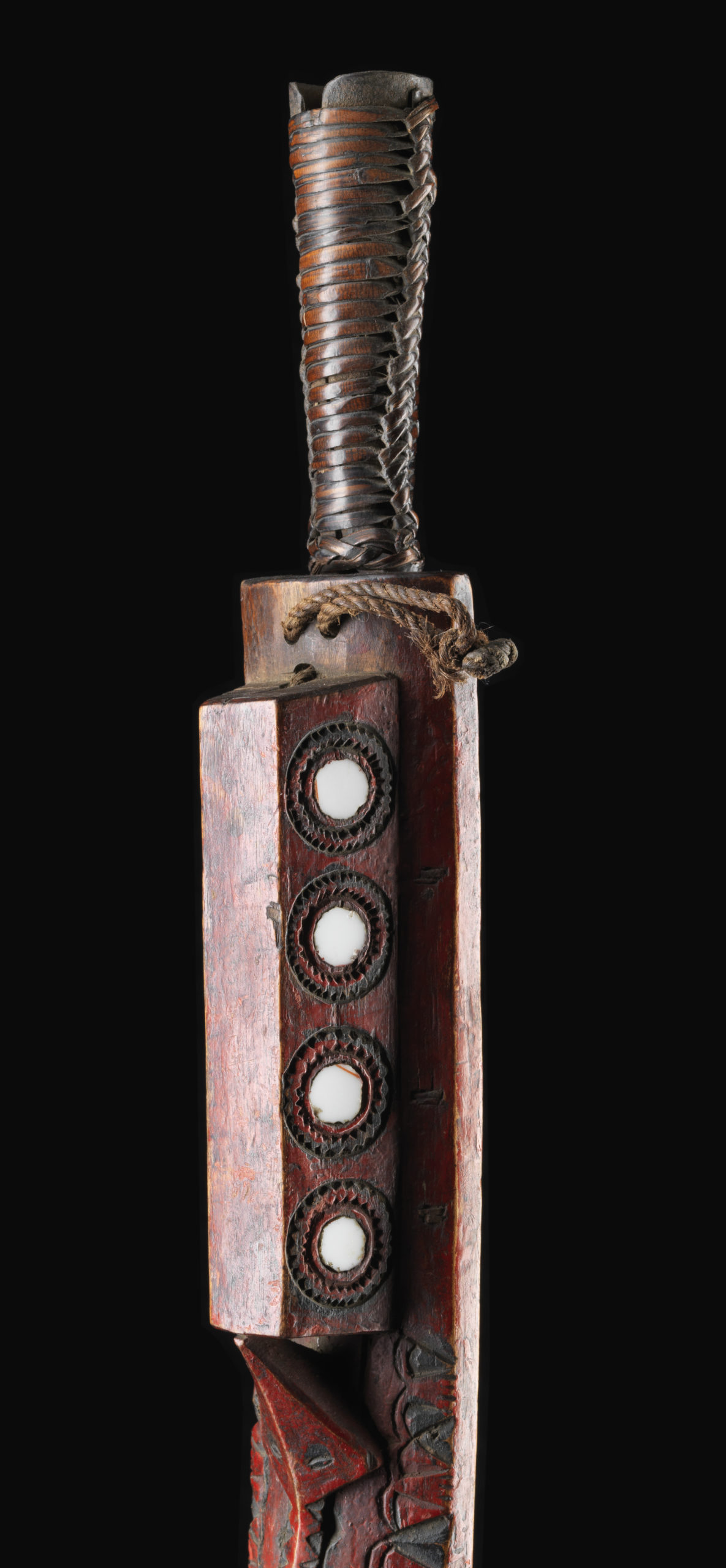Sword „takit“
This sword knife comes from a Paiwan group from South Formosa. The sheath is decorated with red and black lacquer. The weapon, which has a heavy, functional blade with a single bevel, shows a snake on the front of the scabbard, while shell inlays (sun symbol) are inlaid on the block-like carrying element. The snake is representative of the “hundred-step snake” and represents Vorun the ancestor of the nobility. According to an oral tradition, the sun came down from the sky and laid two eggs on a mountain top. This saw Vorun and hatched the eggs until a man and a woman hatched from them, who are the ancestors of the nobility.
The handle is forged as a spout integral with the blade and wrapped in solid rattan. This type of handle design as a forged spout is also found in Japan and on Luzon and apparently has an old, common tradition.
The Paiwan, which are divided into a number of smaller ethnic groups, were, like the Atayal in the north, pushed into the higher-lying interior, especially from the 17th century onwards, by subsequent Chinese invaders over the centuries. Their settlement area today extends from the Damumu Mountains in the Taiwanese central mountains in the north to the southern tip of the island, and east of the mountains to the coast of Taitung County. In the 17th century, the Dutch colonialists referred to the area around the Fort Zeelandia (Tainan), which they built between 1624 and 1634, as “Tayowan” or “Tayovan” in reference to the ethnic name of the powerful Paiwan tribe. This name originally referred only to the city of Tainan, but was later extended to the entire island and phonetically imitated in Chinese as “Taiwan”. The Chinese characters for “Taiwan” mean “Terrace Bay”, which indicates that irrigation was already intensive at that time. Most Paiwan live in the high altitude regions of southern Taiwan.
The name Paiwan is said to derive from a myth. According to this myth, the Paiwan originally lived in a sacred area called Paiwan in the Dawu Mountains and then migrated south, the name was then applied to the emigrants. According to other sources, pai wan can simply be translated as “human”. The paiwan number almost 100,000 people and make up almost one fifth of the indigenous population of Formosa. Taking advantage of the inaccessible geography, they have been able to defend themselves quite efficiently against external aggressors and have never really been captured.
| Object | Sword „takit“, „rinadrug“ |
| Culture | South Formosa, Paiwan (Rukai, Puyuma) |
| Time | 19th century (?) |
| Dimensions | Length 53,5 cm |
| Material | Wood, steel, red lacquer, black lacquer, non-ferrous metal, rattan, shell |







